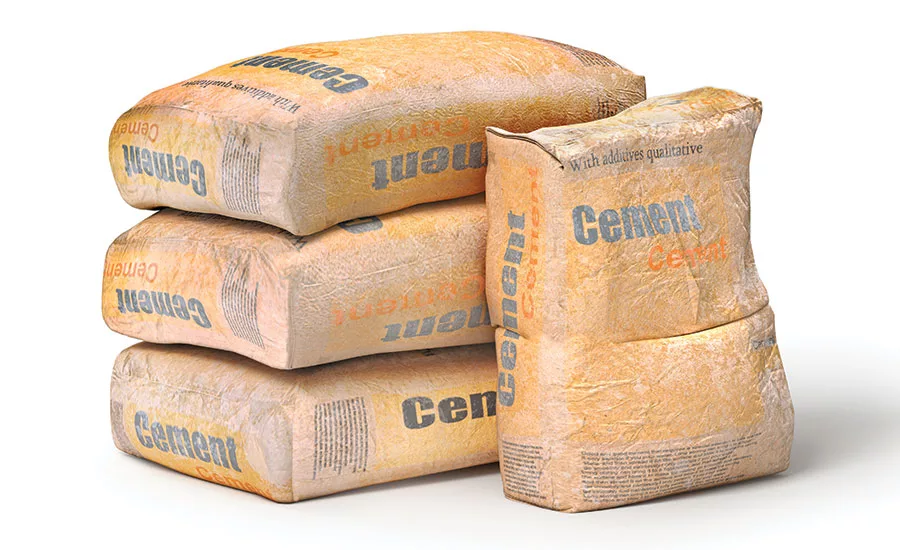Fixing a Perforated Casing with Cement

Cement is most often used for setting casing, but it’s also a valuable troubleshooting tool.
I have written before about cementing casing. That is the most common use of cement in wells, but cement will fix many other situations. For example, if you have perforated casing and the formation no longer produces enough, you must seal the open perforation with cement before you drill down to the next aquifer. Also, if you discover a split in the casing, you need to similarly seal it.
The technique is called a “squeeze.” This where you squeeze cement out through a problem area and seal the problem. The important thing is to put the cement, under control, in the right place. I want to emphasize “under control” in this process. It does not include backing up a ready-mix truck and just dumping. Control of the cement is vital to a successful squeeze.
Let’s say you have open perforations you wish to seal or a casing split that needs repair. It is important to isolate the area you are working on. In the oilfield, this is done with isolation packers, above and below the target area. The lower packer is usually a retrievable bridge plug, often a wireline tool. Run in to just below the target zone and set. When the squeeze job is done, just run in with the wireline retrieving tool, pick up the plug and pull it out of the hole. Sounds simple. The problem is, sometimes cement settles on the tool, making it un-retrievable. A long time ago, we learned to pour a couple sacks of sand on it, let the sand settle and continue. When the squeeze is complete, circulate the sand out and retrieve. This is why we always ran the retrieving tool on pipe, rather than wireline. We could circulate, and pull much more than wireline.
Most water well drillers don’t splurge on such tools, or don’t want to be bothered to use them. There is a way to get similar results, though. Since water wells are not usually too deep, a good way to isolate the hole below the problem area is to back fill. Use crushed stone for the lower part and cap that off with a few bags of sand. Careful sounding will tell you when you’ve got enough.
On the top seal for the squeeze job, there are two ways to do it. The most reliable is to run a simple, inexpensive packer on the tubing. This allows you to set and unset the packer as many times as you need, and provide a good circulation path when needed. Hank Baski and several others make good, inexpensive packers that will also do many other jobs. Good investment.
When you’ve got the job set up like this, the next step is to establish an injection rate. To do that, set the packer and pump fresh water. This will find the hole and pump into the formation. It doesn’t take too much to establish an injection rate. The pressure will come up, and then stabilize. This is the baseline injection pressure.
After finding the injection rate, the next step is to calculate the cement volume needed. Usually, for a small squeeze job, this will be less than the volume of the run-in string. A good way to do find that volume is to unset the packer and displace the cement into the tubing. This allows the cement to be in the right place when you are ready to pump. When the cement is in the hole at the right place, set the packer. This forces the “squeeze” to follow the path of least resistance ... into the perforation. As you pump, pressure gradually increases. This is natural. At some point, either the pressure will get too high to pump or you’ve got all the cement in. When that happens, unset the packer and circulate the hole out. Then reset the packer, apply a little pressure — say, 100 pounds — and shut the well in for 12 hours. If all this goes according to plan, the cement will all be outside of the casing.
After the cement has set, release the packer and retrieve it. Wash out the sand plug below and you are back in business. I have done many of these jobs, usually without a hitch.
This method works very well, but sometimes you don’t have a packer on hand. There is another way, however. I’ve done it a few times, but I don’t recommend it. Too much can go wrong. But I’ll tell you anyway. Without a top packer, you need to be able to seal the tubing to the casing. Make sure your casing will withstand the anticipated pressure. You can displace the cement in with the casing valve open, and then close it to force the cement into the target location. When you have displaced the cement properly, you can open the valve and circulate out. One advantage to this method is, if you are worried about cement stringers in the casing you can pump down the annulus and out the tubing. How’s that for reverse circulation?
Hope this helps. As always, if you want to talk about it, you can always call or email me.
For more Wayne Nash columns, visit www.thedriller.com/wayne.
Looking for a reprint of this article?
From high-res PDFs to custom plaques, order your copy today!

